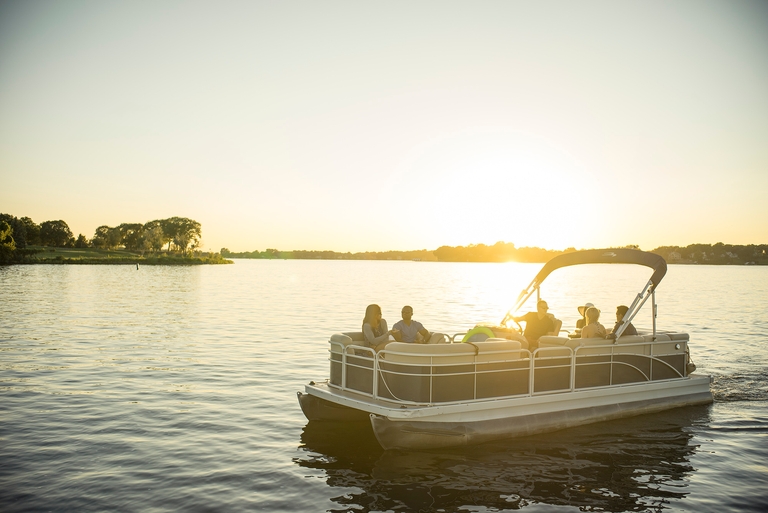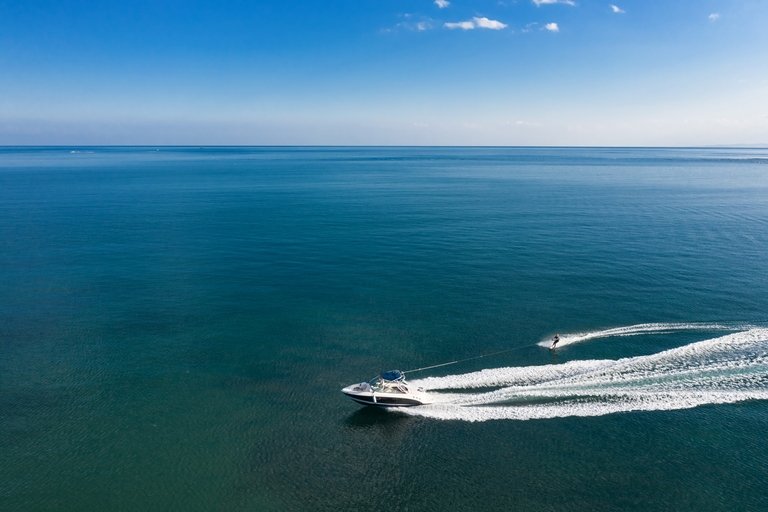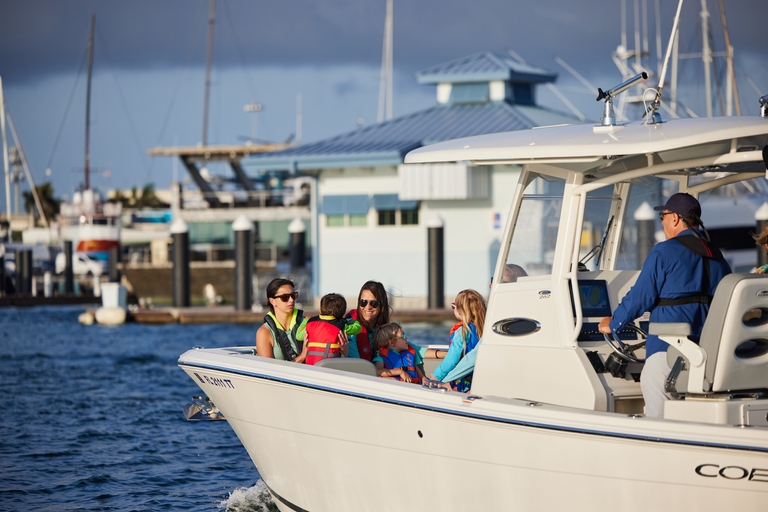How to Use a Boat Fire Extinguisher
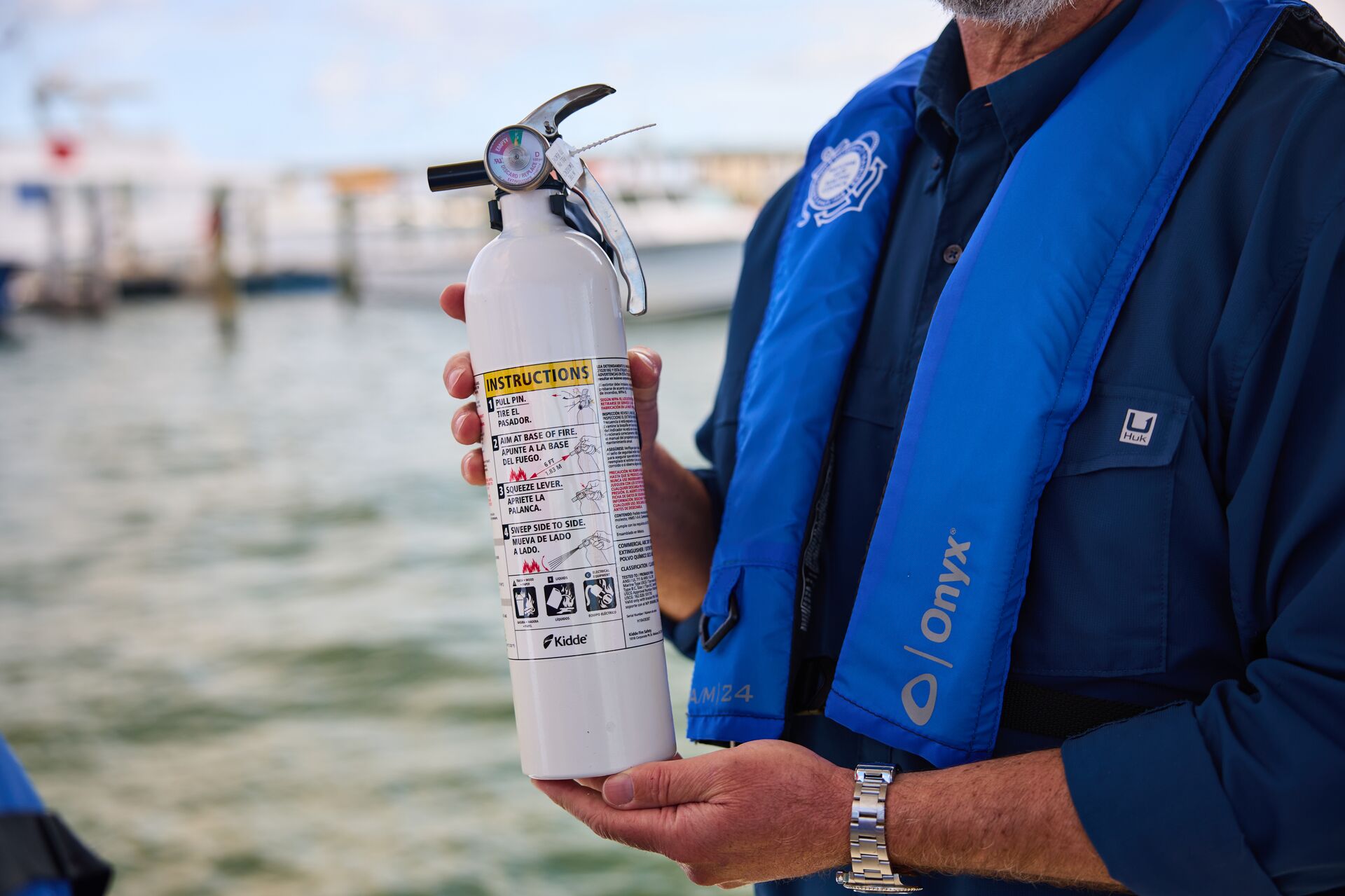
Having a fire extinguisher on your boat is extremely important, and there are several reasons why it matters.
First, it's vital for safety and protection in case a fire breaks out and you need to put it out quickly. The faster you can extinguish the fire, the lower the risk to your boat or the people on it.
Second, having at least one extinguisher on board is generally the law. The number, type, and size of extinguishers needed depends on the size of your boat and other factors.
No matter the kind, though, having one on your boat won't be helpful if you're not sure how to use it. Here's what you need to know about how to use this safety device if you need it.
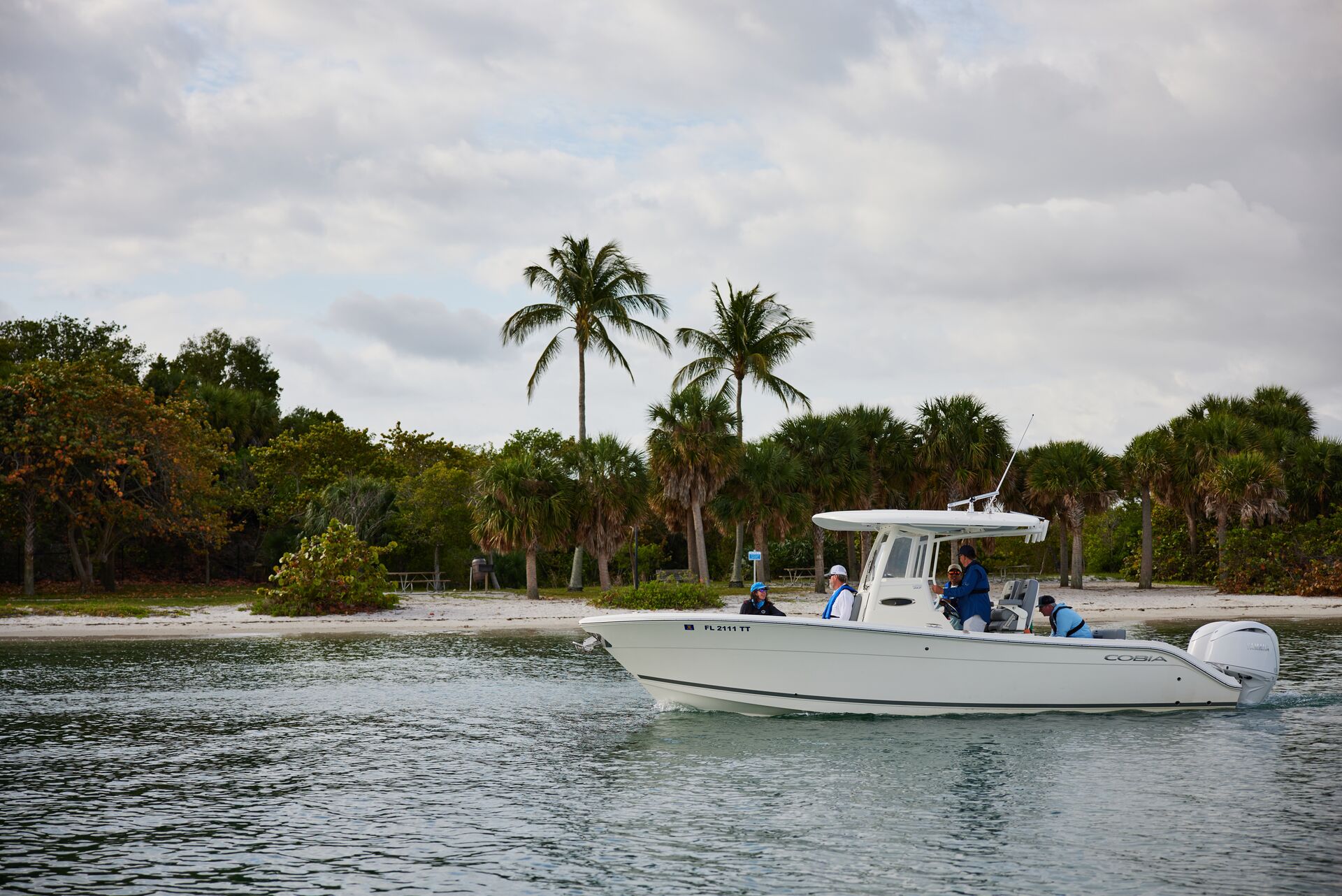
Understanding the Types of Extinguishers
There are several extinguisher classes, including A, B, C, D, and K.
- Class A is best for fires in typically combustible materials like wood, cloth, and paper.
- Class B is for combustible or flammable liquids, tars, greases, and oils.
- A Class C extinguisher handles energized electrical equipment and is specifically for putting out electrical fires.
- Class D extinguishers treat combustible metal fires, such as those involving sodium, potassium, and titanium,
- Class K extinguishers are for kitchen-type fires caused by substances such as vegetable or animal fats and oils.
Every class of extinguisher has its specific use and may not be effective on other types of fires.
A boat fire extinguisher is typically Class B and used for flammable liquids such as gasoline. If you have a large boat or you're using it commercially, though, you may need more than one extinguisher or be required to carry other types.
Know the Fire Extinguisher Locations
Not only do you need to be sure you can use your extinguisher correctly, but you also need to know where it is.
Every extinguisher on your boat should be easily accessible and placed conveniently where it can be found and used quickly and efficiently. It's a good idea to check on them regularly and ensure they aren't obstructed.

Using a Fire Extinguisher: Learn the PASS Technique
To use a boat fire extinguisher correctly, use the PASS technique.
- Pull the pin: This breaks the tamper-resistant seal and allows you to use the extinguisher.
- Aim low: Point the nozzle toward the fire's base.
- Squeeze the handle: This will release the extinguishing agent.
- Sweep from side to side: Move the nozzle from side to side until the fire is out.
This technique will help you use the extinguisher properly and gives you the best chance of successfully extinguishing the fire as efficiently as possible.
Practice Makes Perfect
Conduct regular drills with your friends, family, or crew members who regularly use your boat to ensure everyone knows how to use the extinguisher properly. For additional benefit, consider taking a safety course that includes hands-on training.
Before you set out for a day of boating, make sure your passengers and crew know where the extinguishers are located and how to use them if needed. It's much better to answer questions before leaving the dock rather than try to explain proper extinguisher use during a fire.
Respond Quickly and Calmly
During a fire, act immediately but stay calm.
Assess the size and source of the fire so you can make the best attempt at extinguishing it. Prioritize getting everyone to safety and contacting emergency services for large or out-of-control fires.

Inspect Your Extinguishers at Regular Intervals
Anytime you perform maintenance on or inspect your boat, look at the extinguishers.
Check the pressure gauge to ensure the extinguisher has a full charge, and examine it for signs of corrosion or damage. Additionally, look at the nozzle, which should be clear and not blocked.
Understand Boat Fire Extinguisher Maintenance
Scheduling regular maintenance checks and servicing is crucial. Follow the manufacturer's recommendations to keep your extinguishers working correctly. You want to be sure they'll work when you need them, and good maintenance increases peace of mind.
If you use an extinguisher, you must replace or recharge it. It's also best to replace fire extinguishers that are no longer in good working order. Extinguishers eventually expire; an expired one may not have the power or potency you need to quench a fire.
Know Your Boat's Specific Fire Risks
Some areas on a boat, such as the galley and the engine room, are more at risk of fire. Knowing these areas can help you be better prepared for any fires.
Additional fire safety measures in these high-risk areas are vital to keeping your passengers and boat safe.
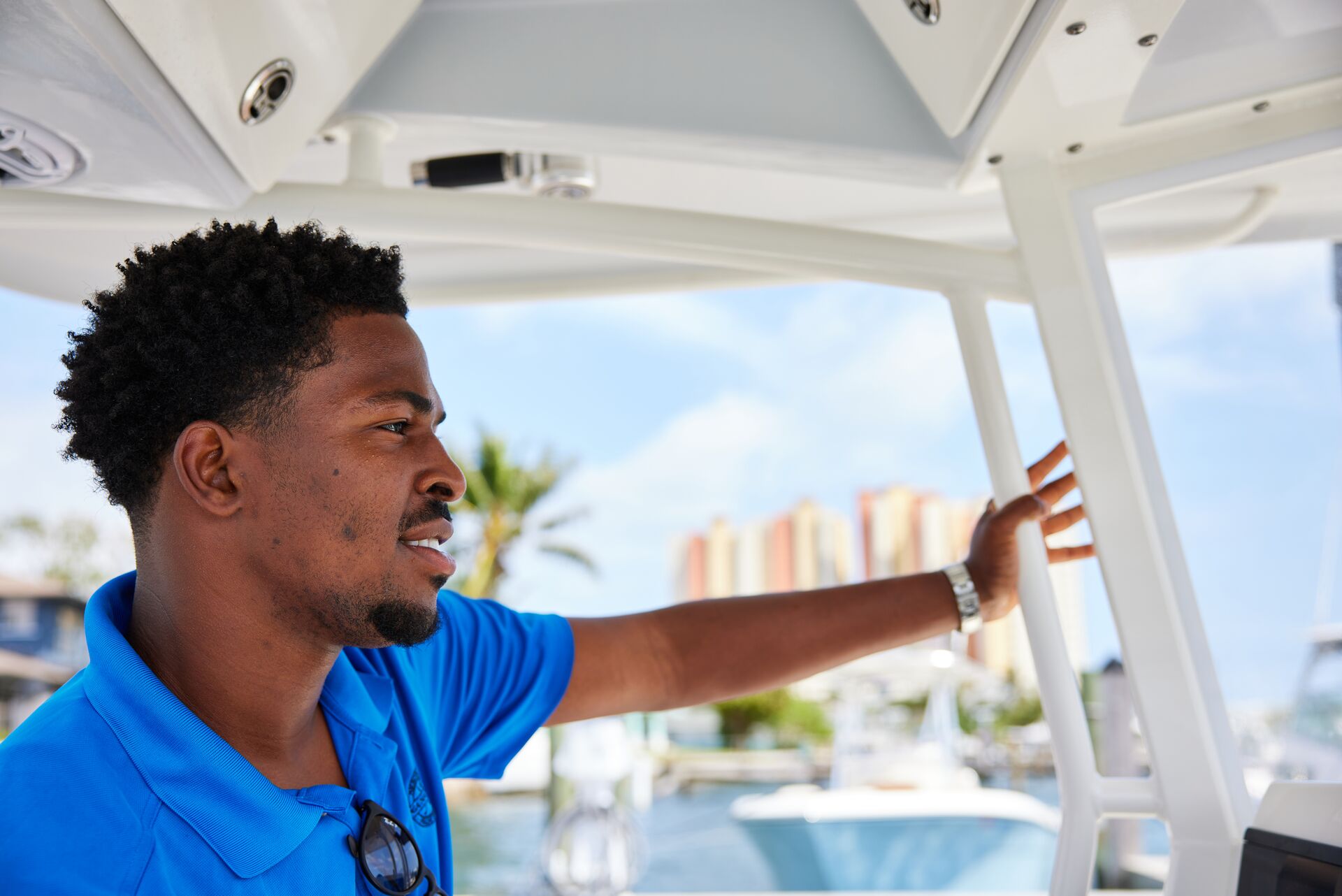
Increase Your Boating Knowledge With a Safety Course
One of the best ways to increase your knowledge of fire extinguishers and other safety equipment on your boat is to take a safety course through Boat-Ed. The more you know about taking good care of your boat, the safer you and your passengers will be on all your adventures.
In addition to improving your peace of mind while on the water and keeping yourself and your passengers safe, most states require boat operators to pass a boating education course to boat legally.
So, before your next water adventure, choose the course for your state or the Canadian course through Boat-Ed and start learning. You'll learn more about using fire extinguishers, avoiding boating accidents, navigating the waters safely, and more!

